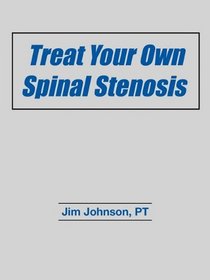Search -
Treat Your Own Spinal Stenosis
Treat Your Own Spinal Stenosis
Author:
Spinal stenosis is a condition where areas of the spine have become narrowed. This narrowing,�in turn, can put pressure on the spinal cord or nerves and cause low back pain, as well as pain or abnormal sensations in the buttocks,�thighs, legs or feet.��The following are often involved in the process of spinal stenosis�...
Clearly radiographic pictures of one's spine do not tell the whole tale, as there are many people that are able to live pain-free with spinal stenosis. But if having a horrible looking spine on an MRI doesn't necessarily mean you'll have pain, then what does?
Well, consider the study that checked out the back muscles of spinal stenosis patients with an EMG - and found that 17 out of 22 of them had abnormalities! Apparently there are other factors involved that might determine if one will have pain or not. In fact, much spinal research has identified specific problems that people with spinal stenosis have, problems such as decreased back proprioception, or multifidus back muscles that simply don't contract like they should.
Never heard of these kinds of problems? Many haven't. Treat Your Own Spinal Stenosis will answer these kinds of questions and more. It will teach you what spinal stenosis is and how it got there. Then, you will learn what you can do about it by putting your spine through a series of "Tune-Ups".
The whole goal of Treat Your Own Spinal Stenosis is to pack 30 years of published back research into an easy-to-read book, one�that offers�a scientifically proven�back program that takes only minutes a day to do.� Additionally, handy exercise sheets�are included to guide�the reader�step-by-step through each day of the�six-week program. (edited by author)
Author:
Spinal stenosis is a condition where areas of the spine have become narrowed. This narrowing,�in turn, can put pressure on the spinal cord or nerves and cause low back pain, as well as pain or abnormal sensations in the buttocks,�thighs, legs or feet.��The following are often involved in the process of spinal stenosis�...
- bulging or henia... more »
- bone spurs
- one vertebrae slipping on top the other
- degenerative disc disease
- scoliosis
- unstable vertebrae
Clearly radiographic pictures of one's spine do not tell the whole tale, as there are many people that are able to live pain-free with spinal stenosis. But if having a horrible looking spine on an MRI doesn't necessarily mean you'll have pain, then what does?
Well, consider the study that checked out the back muscles of spinal stenosis patients with an EMG - and found that 17 out of 22 of them had abnormalities! Apparently there are other factors involved that might determine if one will have pain or not. In fact, much spinal research has identified specific problems that people with spinal stenosis have, problems such as decreased back proprioception, or multifidus back muscles that simply don't contract like they should.
Never heard of these kinds of problems? Many haven't. Treat Your Own Spinal Stenosis will answer these kinds of questions and more. It will teach you what spinal stenosis is and how it got there. Then, you will learn what you can do about it by putting your spine through a series of "Tune-Ups".
The whole goal of Treat Your Own Spinal Stenosis is to pack 30 years of published back research into an easy-to-read book, one�that offers�a scientifically proven�back program that takes only minutes a day to do.� Additionally, handy exercise sheets�are included to guide�the reader�step-by-step through each day of the�six-week program. (edited by author)
ISBN-13: 9781608445622
ISBN-10: 1608445623
Publication Date: 4/29/2010
Pages: 108
Rating: ?
ISBN-10: 1608445623
Publication Date: 4/29/2010
Pages: 108
Rating: ?
0 stars, based on 0 rating
Publisher: Dog Ear Publishing, LLC
Book Type: Paperback
Members Wishing: 3
Reviews: Amazon | Write a Review
Book Type: Paperback
Members Wishing: 3
Reviews: Amazon | Write a Review
Genres:




